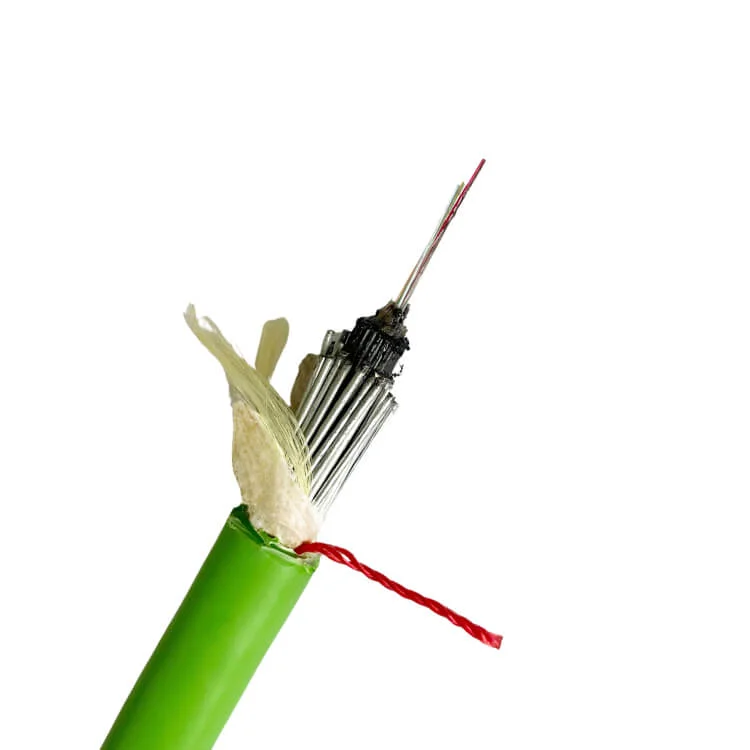
China Underwater Fiber Optic Cable Manufacturer
We’re China-based manufacturer specializing in the design, production, and export of advanced underwater fiber optic cables. Offering tailored solutions for global telecommunications and energy sectors.

Our Underwater Fiber Optic Cables
Underwater fiber optic cables are a popular choice, but different markets have different needs. For example, many customers in the UK prefer cables with LSHZ or colored sheathing. If you’re considering these options, our experienced team can help you choose the perfect cable for your project.
Custom Underwater Fiber Optic Cable

Our custom underwater fiber optic cables are engineered to withstand the harshest marine conditions while delivering exceptional data transmission performance. With a wide range of customizable options, we provide reliable and efficient connectivity for offshore platforms, subsea installations, and other underwater applications.
Let us help you find the perfect solution for your underwater project.
Applications for Underwater Fiber Optic Cable
Our steel wire armored (SWA) fiber optic cable can be installed in a variety of outdoor conditions, including underwater, on poles, and underground.

Underwater

Climbing

Direct Buried
Underwater Fiber Optic Cable: The Backbone of Global Communication
1. What is Underwater Fiber Optic Cable?
Underwater fiber optic cable, also known as submarine cable, is a high-capacity communication link that connects different continents and countries through underwater routes. It consists of multiple optical fibers encased in protective layers to withstand the harsh marine environment. These cables are crucial for global communication, enabling high-speed data transfer, internet connectivity, and international phone calls.
2. How Can Underwater Fiber Optic Cable Have Great Performance?
Underwater fiber optic cables exhibit exceptional performance due to several factors:
- High Bandwidth: They can transmit vast amounts of data at incredible speeds, allowing for seamless communication and large file transfers.
- Low Latency: Data travels through fiber optic cables with minimal delay, ensuring real-time communication and online experiences.
- Reliability: These cables are designed to withstand extreme pressures and temperatures, making them highly reliable and resistant to disruptions.
- Security: Underwater cables are physically difficult to access, enhancing data security and protection from cyber threats.
3. What are the Applications of Underwater Fiber Optic Cable?
Underwater fiber optic cables have a wide range of applications, including:
- Global Internet Connectivity: Facilitating high-speed internet access across continents.
- International Phone Calls: Enabling clear and reliable voice communication between countries.
- Financial Transactions: Supporting secure and rapid financial data transfer.
- Telecommunication Services: Providing essential infrastructure for various communication services.
- Research and Development: Supporting scientific data transmission and collaboration.
4. What are the Advantages of Underwater Fiber Optic Cable?
Underwater fiber optic cables offer several advantages:
- High Speed and Capacity: Transmit data at significantly higher speeds compared to traditional copper cables.
- Long Distance Transmission: Can cover vast distances without signal degradation.
- Reduced Interference: Less susceptible to electromagnetic interference, ensuring signal quality.
- Energy Efficiency: Consumes less power compared to other communication technologies.
- Environmental Friendliness: Minimal environmental impact compared to traditional cables.
5. What are the Types of Underwater Fiber Optic Cable?
There are different types of underwater fiber optic cables based on their construction and application:
- Conventional Cable: The most common type, consisting of multiple optical fibers surrounded by protective layers.
- Armorless Cable: Used in shallow waters, with less protection but higher flexibility.
- Branching Cable: Allows for connecting additional cables without interrupting main transmission.
6. What are the Materials for Underwater Fiber Optic Cable?
Underwater fiber optic cables are constructed using various materials:
- Optical Fiber: Carries light signals for data transmission.
- Copper Conductors: Provide power for electronic equipment within the cable.
- Polyethylene: Acts as a water-blocking layer.
- Steel Wires or Armor: Provides strength and protection against external forces.
- Polyethylene Outer Sheath: Protects the cable from abrasion and corrosion.
In conclusion, underwater fiber optic cables are the backbone of global communication, enabling high-speed data transfer and connecting people across continents. Their exceptional performance, reliability, and security make them essential for modern society.







